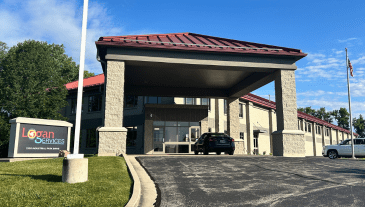The air conditioning (AC) compressor is essentially the “heart” of any air conditioning system. This electrical component works to pressurize and circulate the refrigerant through the AC system to produce cooled air. But how does air conditioning compressor work and operate?
A Brief History of Air Conditioning
Before diving into compressor specifics, it’s helpful to understand a brief history of air conditioning invention. The creation of modern AC systems dates back to 1902 when engineer Willis Carrier developed an “apparatus for treating air” to control humidity levels at a printing plant. This led to the recognition that cooled, dehumidified air made indoor environments far more comfortable during warm weather.
Over the next few decades, Carrier’s technology evolved into what we now know as central air conditioning. This included the incorporation of a compressor for the key task of circulating and pressurizing refrigerant to enable cooling.
What Is an AC Compressor?
An AC system compressor is a pump driven by the engine or an electric motor designed to pressurize refrigerant and circulate it through the air conditioner. It essentially draws in cool, low-pressure refrigerant gas and compresses it, releasing hot, high-pressure refrigerant to the condenser.
Some key roles and characteristics of an air conditioner compressor include:
- Creates pressure changes to move refrigerant through the system
- Pressurizes refrigerant to transition it from gas to liquid
- Generates the heat transfer effects that enable cooling
- Requires high pressures to operate properly
Types of AC Compressors
There are several common types of air conditioning compressors used for home and vehicle air conditioning systems:
Piston Compressors
Early compressors used a piston design with cylindrical pistons shifting up and down to compress refrigerant. Piston types can deliver substantial pressure changes but tend to be noisy, with more parts needing maintenance.
Rotary Compressors
Rotary vane and scroll compressors use rotating components rather than pistons to handle refrigerant compression. Rotary types often last longer and run more smoothly and quietly.
Centrifugal Compressors
Found in very large commercial air conditioner applications, centrifugal compressors use rotational energy and centrifugal force to circulate refrigerant. Operating costs are low, but the upfront cost is very high.
Each compressor type has its own set of advantages and best implementation scenarios depending on factors like size, efficiency, noise, and cost considerations.
How Air Conditioning Compressors Work
Understanding the air conditioning refrigeration cycle that the compressor facilitates is key to learning how it works to enable cooling. This cycle includes four key stages:
1. Compression
The compressor draws in cool, low-pressure refrigerant gas, which is then compressed and pressurized significantly through piston action or rotating components. This leaves high-temperature, high-pressure gas.
2. Condensation
Pressurized hot gas from the compressor flows into the condenser coils near the air conditioning unit. The coils allow heat to dissipate from the gas into the outside air, causing the refrigerant to condense into a liquid.
3. Expansion
Passing through an expansion valve instantly drops the refrigerant’s pressure, allowing some liquid to boil off into a gas/liquid mix at a low temperature.
4. Evaporation
Entering the evaporator coil inside the home, the cool refrigerant absorbs and removes heat from the indoor air as it evaporates and changes state back into a gas. The cycle repeats, enabling ongoing heat transfer and cooling.
Key AC Compressor Components
While compressor designs vary across piston, scroll, rotary vane, and centrifugal types, they share some fundamental internal components and mechanics:
- Cylinder Head/Housing: Metal enclosure holding all internal compressor components
- Pistons/Rotors: Contract and expand to intake and compress refrigerant
- Valves: Let refrigerant flow in and block reverse flow on compression strokes
- Bearings: Allow rotating components to shift smoothly and quietly
- Shaft: Driven by pulley/crankshaft causing compression motions
- Seals/Gaskets: Prevent refrigerant leakage at joints
Proper lubrication of internal components is critical for reducing friction, wear, and noise.
Lubrication and Cooling Needs
In addition to needing sturdy, well-aligned components, an air conditioning compressor requires oil lubrication and sufficient cooling. Compressor oil helps to coat and protect metal components that are in constant motion. Meanwhile, proper airflow prevents an air conditioning compressor and refrigeration system from overheating.
Insufficient lubrication or cooling can lead to rapid wear, reduced efficiency, and eventual compressor breakdown.
Compressor Capacity and Tonnage
An air conditioning compressor’s cooling capacity is measured in the tons of heat transfer it can facilitate. Residential central air conditioning capacities usually range from 1 ton to 5 tons. For context, one ton of cooling equals removing 12,000 BTUs (British Thermal Units) per hour.
Larger commercial air conditioning compressors may have capacities of up to 100 tons for huge facilities like warehouses or data centers. The compressor size must align correctly with the cooling demands for an appropriately functioning system.
Efficiency and SEER Ratings
The seasonal energy efficiency ratio (SEER) gives consumers key data on the expected operating costs and savings of an AC unit over an entire cooling season. SEER ratings quantify cooling output achieved per unit of electricity consumed. So, a higher SEER signals a more efficient AC unit design.
Compressor technology innovations that reduce energy loss and leakage during the refrigeration cycle directly impact efficiency gains reflected in SEER scores. So, modern compressors tend to enable far greater efficiency than older AC systems.
Common AC Compressor Faults
Some potential faults or issues affecting air conditioner compressor function include:
- Refrigerant Leaks: Refrigerant leaks lower system pressure, causing reduced cooling capacity plus compressor stress.
- Valve Issues: Compressor valves stuck open/closed or not sealing fully impact compression performance.
- Bearing Wear: Excess bearing friction from lack of lubrication or misalignment decreases efficiency.
- Electrical Problems: Issues with power supply, motor windings, capacitors, or circuit boards can disable the compressor.
Careful leak checks, pressure measurements, visual inspection, amp draws, and test operations help diagnose compressor vs wider system issues.
Maintenance and Repairs
While the sealed system itself requires no owner maintenance, components like fans, belts, and filters do need regular care. Annual professional AC tune-ups check for refrigerant leaks, measure pressures, test electrical parts, and clean key components. This prevents minor issues from cascading into major repair needs down the road.
Compressor repair costs often approach or exceed replacement costs. So once the compressor itself fails despite preventive maintenance, replacing the entire unit often makes the most economic sense in the long term.
The Logan Difference
Family-owned since 1969, Logan A/C & Heat sets us apart through our commitment to customers. Our extensive training ensures quality installations and service. We care deeply about getting the job done right the first time, with no customer delays or frustrations.
We back our work, helping activate warranties so coverage falls on us rather than homeowners. We also give back to our community through donations, giveaways, and helping hands.
When you choose Logan, you get the expertise and care of a family company that treats you like family. That’s the Logan Difference.
Frequently Asked Questions (FAQs)
What exactly does an AC compressor do?
An AC compressor pressurizes refrigerant gas as part of the refrigeration cycle, which allows an air conditioning system to provide cool air. It takes low-pressure gas from the evaporator, compresses it to a high-pressure, high-temperature gas using pistons or rotors, and pumps this refrigerant to the condenser.
Do all air conditioners have compressors?
Yes, all air conditioning systems, including window units, wall units, and central air conditioners, rely on a compressor. Mechanics behind the functionality of AC units require the compressor to circulate and pressurize the refrigerant, enabling the heat transfer effects that provide cool air. Without the compressor functioning properly, these cooling effects could not occur. Some systems may have the compressor built into outdoor condenser cabinets.
How often should you replace an air conditioner compressor?
Most residential air conditioning compressors have an expected lifespan of around 10-15 years. With proper annual maintenance to prevent refrigerant leaks and other wear issues, a quality compressor should operate reliably for over a decade before replacement needs arise. Signs it may require replacing sooner include reduced cooling, odd noises, high utility bills, major leaks, or burnouts.




















